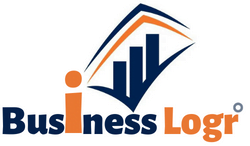
When discussing a ‘safe’ investment, most Indians often turn to fixed deposits (FDs). The reasons are pretty simple. Fixed deposits are risk-free and provide security. Although FDs provide stability, they may not provide the best returns. In some cases, FD returns fall short of inflation. People look there for alternatives. And why not? To get better returns, you should rethink your investment strategy. In this blog, we will discuss various risk-reward-balanced alternatives to FD!
1. Corporate Bonds
A corporate bond is a financial instrument that serves as a loan to corporations by investors. These funds meet the company’s business requirements, ranging from a plant acquisition to expansion. In return, investors are paid fixed returns for predetermined tenure.
- The Benefits of Corporate Bonds High Returns: It provides higher returns than FDs. Grip Invest offers investment-grade options with a yield of up to 13% before taxes to investors.
- Protect Against Inflation: In contrast to fixed deposits, corporate bond returns may provide inflation protection.
- Regular Fixed Income: India’s corporate bond investments provide steady passive income and pay periodic interest.
- Diversification and a Wide Range of Options: Corporate bonds with a variety of tenures, issuers, ratings, and yields can help investors diversify their portfolio.
Limitations Of Corporate Bonds
- Credit Risk: There is a risk of default by the issuer. Non-investment grade and unlisted bonds often carry higher default risk.
- Liquidity Concerns: Selling corporate bonds in the secondary market can be challenging sometimes due to a lack of liquidity.
- Complexity In Selection: Choosing individual corporate bonds requires careful analysis of issuers and ratings.
2. Funds in common
A mutual fund is an investment company that pools money from many investors to invest in stocks, bonds, and other investment options. It is managed by a professional fund manager. The AUM of the Indian mutual fund industry has witnessed a 5-fold increase in the past decade.
Advantages Of Mutual Funds
- Higher Returns Than FDs: Mutual funds (especially equity funds) can provide better returns than FDs over the long term.
- Professional Management: Fund managers actively manage the portfolios of mutual funds. They readjust it to the changing market conditions.
- Diversification: Mutual funds make investments in a variety of industries. It helps to reduce the risk of the portfolio.
- No Withdrawal Restrictions: Withdrawals before maturity might face penalties in FDs. Mutual funds, on the other hand, do not have this restriction.
You can sell any number of units as per your requirements
- Mutual Funds’ Restrictions Market Risk: Returns in mutual funds are subject to market fluctuations. In contrast, fixed returns are offered by FD regardless of market volatility.
- Costs: Mutual funds may have management fees and involve an expense ratio. There are no costs associated with FDs apart from penalties in case of early withdrawal.
- Lack Of Control: Investors have limited control over securities, bonds, and other investments selected within the fund’s portfolio.
3. Securitised Debt Instruments (SDIs)
Several underlying assets are combined into an interest-bearing security to create SDIs. The underlying assets can be loans, lease agreements, invoices, etc. It is an emerging alternative fixed-income opportunity in India for retail investors. Grip Invest offers a variety of SDIs like BondX, LeaseX, LoanX, and InvoiceX.
Advantages Of SDIs
- Higher Returns Than FDs: Investors can easily generate up to 16% IRR by investing in SDIs.
Returns that are Fixed and Not Linked to the Market: The returns are fixed and not affected by changes in the market. - Diversification: Investors can put their money into a pool of underlying assets that is more diverse across categories. For instance, BondX is a collection of many bonds with an investment grade rating from a carefully selected group of issuers.
- Security Cover: Over-collateralization, cash collateral, excess interest spread (EIS), and other security measures cover the credit default risk in the majority of SDIs.
Limitations Of SDIs
- Risk of Default: The originator may not make payments on time. Low Liquidity- Selling SDIs in the secondary market is challenging.
- Complexity: Individual investors may have difficulty comprehending the SDI structure. Online investment platforms are crucial for investors’ assistance and due diligence in this situation.
4. Fractional Commercial Real Estate (CRE)
Fractional CRE investment allows investors to own a part of the commercial property and receive fixed returns in proportion to their investment. These investments are usually made in Grade A properties like office spaces, shopping malls, etc.
- The Benefits of Fractional CRE Low Entry Costs: Investors can participate in fractional CRE with a lower initial investment. It can begin as little as INR 1 lakh.
- High Stable Income: Generates a consistent stream of rental income from tenants, yielding up to 12% yield.
- Professional Management: Investors are relieved of day-to-day management. Fractional CRE often come with professional property management.
- Potential Capital Appreciation: Capital gains can result from an increase in the value of a property over time.
- Consequences of Fractional CRE Limited Control: Fractional investors have limited control over decision-making related to the property.
- Risk of Default: This investment could fall behind on rent payments.
- Fees And Costs: Certain costs may be associated with fractional ownership platforms. It can include management fees, transaction costs, etc.
5. Public Provident Fund (PPF)
PPF is a government-backed long-term investment option for risk-averse investors to earn fixed interest rates decided every quarter by the Finance Ministry. A PPF account must be open for at least 15 years before it can be extended for an additional five years in blocks.
- Benefits of PPF Tax Saving: PPF qualifies for an exempt-exempt-exempt (EEE) scheme where the amount invested, the interest received, and the maturity amount is tax exempt. The tax deductions are available for a maximum amount of INR 1.5 lakhs per year under Section 80C of the Income Tax Act.
- Flexible Investment Frequency: The deposit can be paid in one lump sum or in monthly installments, and there is no limit to how many installments can be made in a financial year.
- Partial Withdrawal: Beginning with the seventh fiscal year, the PPF amount can be partially withdrawn.
Limitations Of PPF
- Lock-In Period: PPF has a minimum lock-in period of 15 years.
- Fixed Interest Rates: PPF is a fixed return scheme and may not generate the highest returns in the growing economy.
Conclusion
In the constantly evolving economic landscape, investing only in fixed deposits is insufficient to beat inflation and build wealth. Therefore, it is necessary to investigate higher-paying, more predictable alternatives to fixed deposits. Also, an investor should diversify in various investment avenues like FDs, corporate bonds, SDIs, fractional real estate, PPF, etc, while building their investment portfolio.
At Grip Invest, investors can explore new-age alternative fixed-income options (SDIs and corporate bonds). Better risk-adjusted returns are the goal of these curated, listed, and credit-rated options.




